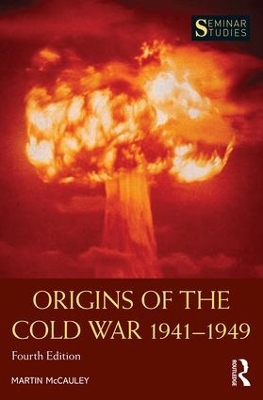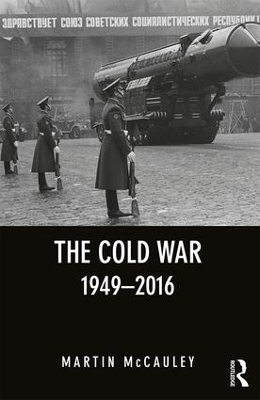Seminar Studies in History
4 total works
One of the most successful dictators of the twentieth century, Stalin transformed the Communist Party of the Soviet Union into one of the world’s leading political parties. Stalin and Stalinism explores how he ammassed, retained and deployed power to dominate, not only his close associates, but the population of the Soviet Union and Soviet Empire.
Moving from leader to autocrat and finally despot, Stalin played a key role in shaping the first half of the twentieth century with, at one time, around one-third of the planet adopting his system. His influence lives on – despite turning their backs on Stalin’s anti-capitalism in the later twentieth century, countries such as China and Vietnam retain his political model – the unbridled power of the Communist Party. First published in 1983, Stalin and Stalinism has established itself as one of the most popular textbooks for those who want to understand the Stalin phenomenon. This updated fourth edition draws on a wealth of new publications, and includes increased discussion on culture, religion and the new society that Stalin fashioned as well as more on spying, Stalin's legacy, and his character as well as his actions.
Supported by a chronology of key events, Who’s Who and Guide to Further Reading, this concise assessment of one of the major figures of the twentieth-century world history remains an essential read for students of the subject.
Origins of the Cold War 1941-1949 covers the formative years of the momentous struggle which developed between two superpowers, the Soviet Union and the United States. It not only involved these titans but also the rest of the globe; many proxy wars were fought much to the detriment of the developing world. In a clear, concise manner, this book explains how the Cold War originated and developed between 1941 and 1949.
The fourth edition is revised, updated and expanded to include new material on topics such as the culture wars and Stalin's view of Marxism. The introduction looks at the various approaches which have been adopted to analyse the Cold War and the challenges to arrive at a theory which can explain it. The book explores questions such as:
- Who was responsible for the Cold War?
- Was it inevitable or could it have been avoided?
- Was Stalin genuinely interested in a post-war agreement?
Illustrated with maps and figures and containing a chronology and who's who of key individuals, Origins of the Cold War 1941-1949 incorporates the most recent scholarship, theories and information to provide students with an invaluable introduction to a fascinating period that shaped today's world.
Covering the development of the Cold War from the mid-twentieth century to the present day, The Cold War 1949-2016 explores the struggle for world domination that took place between the United States and the Soviet Union following the Second World War. The conflict between these two superpowers shaped global history for decades, and this book examines how this conflict developed into a nuclear arms race, spurred much of the wider world towards war and eventually resulted in the collapse of the Soviet empire.
In this accessible yet comprehensive volume, Martin McCauley examines not only the actions of the United States and the Soviet Union but also the effects upon and involvement of other regions such as Africa, Central America, Asia, Europe and the Middle East. Key themes include the Sino-Soviet relationship and the global ambitions of the newly formed People's Republic of China, the rise and fall of communism in countries such as Cuba, Angola and Ethiopia, the US defeat in Vietnam, the gradual unravelling of the Soviet Union and the changing shape of the post-Cold War world.
Providing a wide-ranging overview of the main turning points of the conflict and illustrated throughout with photographs and maps, this is essential reading for all students of the Cold War and its lasting global impact.



